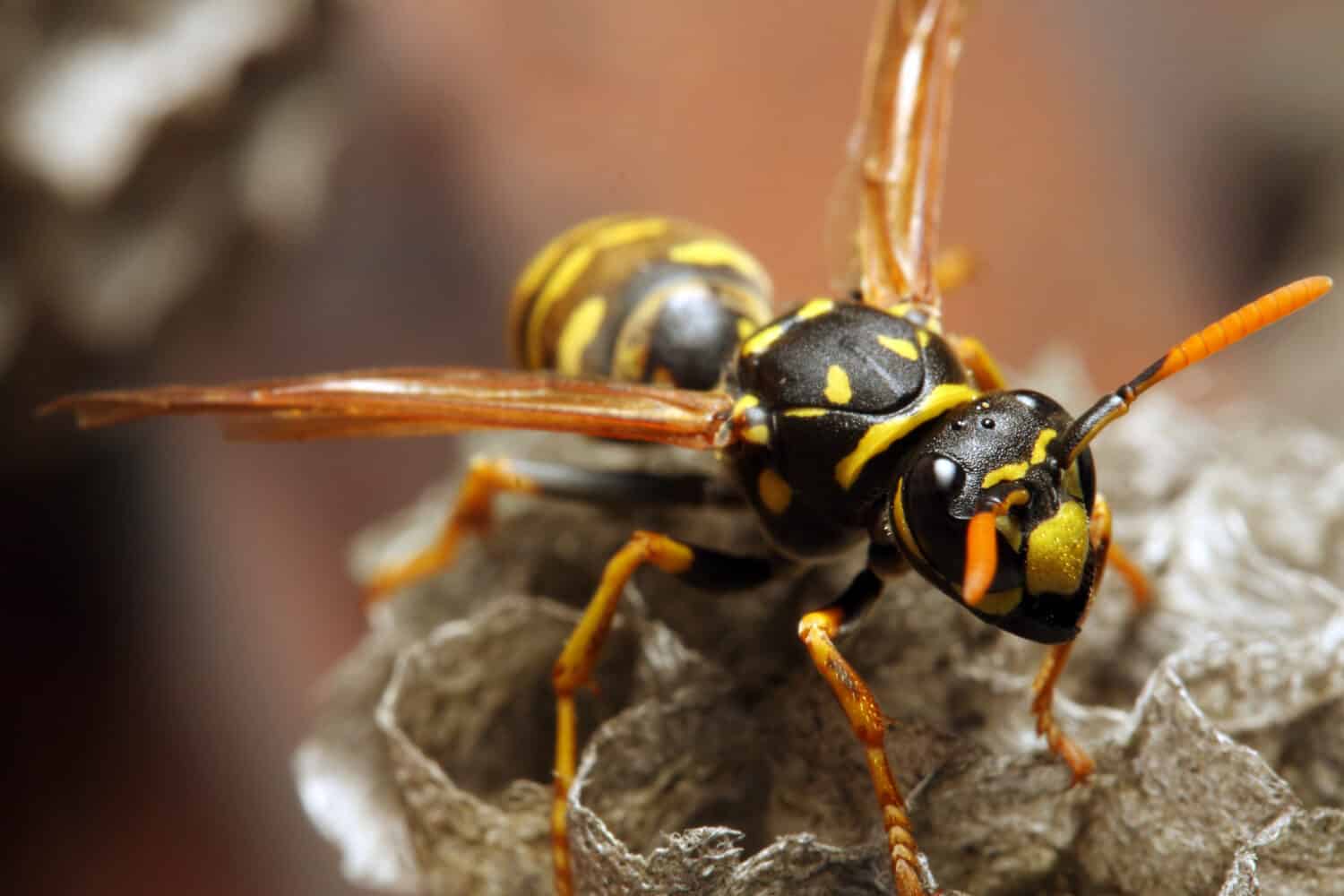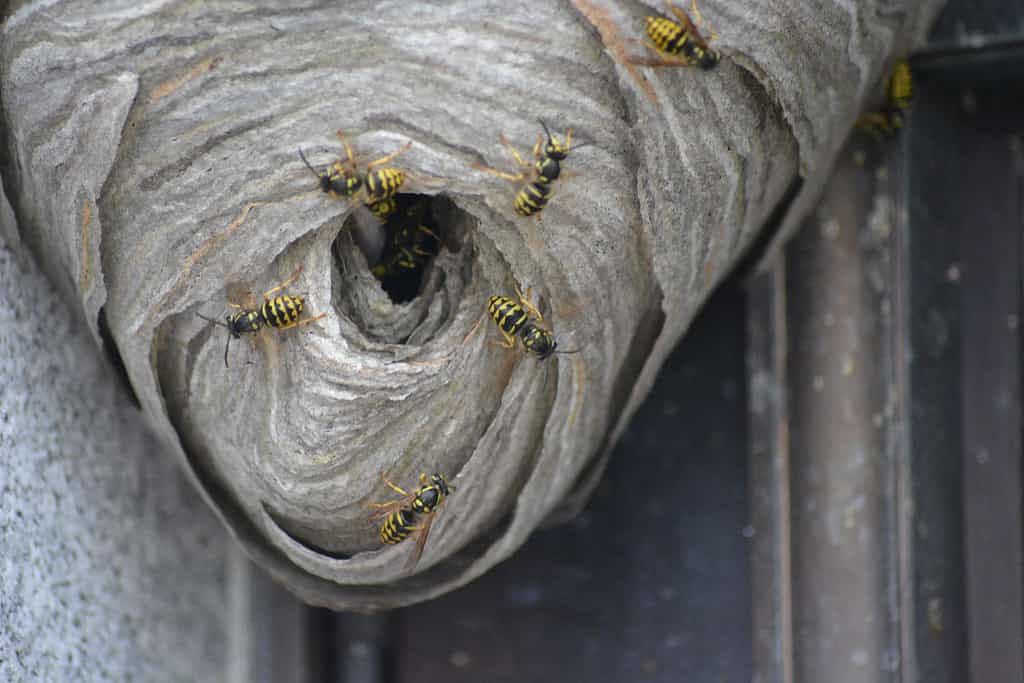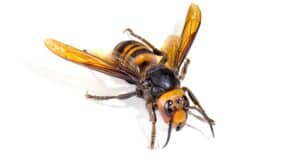Even Being in an Excavator Can’t Save You From a Wasp’s Fury!
In the heart-pounding video below, a daring man uses a massive backhoe/excavator to excavate a wasp nest encircling a small tree. As the shovel delves into the nest, the wasps immediately spring into action, launching an aggressive defense of their hive.
Watch Why Wasps Are Never to be Messed With!
Realizing the danger, the operator swiftly turns the excavator, releasing the shovel with furious wasps. The hive’s sheer number of wasps is mind-boggling, defying belief. The excavator’s cabin is swarmed by thousands more wasps, now blinded with rage. With unwavering determination, the wasps seek any vulnerable point of entry. It doesn’t take long for them to discover a small hole in the excavator’s window, and chaos ensues.

This massive wasp nest is a testament to just how large they can build their intricate homes to become! A nest this size would be home to thousands upon thousands of wasps.
©Asjan/Shutterstock.com
The enraged wasps unleash an onslaught of relentless stings as the camera captures the intense moment of the operator being besieged. The operator, overwhelmed by the ferocity of the attack, abruptly drops the camera, allowing us to imagine their struggle against the swarm of painful stings.
This gripping video serves as a cautionary tale, reminding us all why it is crucial never to disturb a wasp nest. Witness the terrifying consequences unfold before your eyes, and remember, it’s a lesson best learned without first-hand experience.
The Incredible Unified Defense of a Hive is a Marvel of Nature!

The yellow jacket, a type of wasp, is known to be highly aggressive. Even walking near the nest of these natural nightmares may make them dead set on attacking you.
©Kletr/Shutterstock.com
When hives face aggression, wasps, bees, and hornets reveal an astounding display of coordinated defense. In the video below, enraged wasps fiercely attack the man in the excavator, showcasing this remarkable behavior. Using intricate communication, these social insects transmit alarm signals and swiftly mobilize. Witnessing the collective strength and relentless aggression of these insects, exemplified by the excavator incident, showcases the remarkable power of their cooperative strategies in protecting their hives. With their formidable stinging ability, they inject venom into the threat, deterring further attacks and warning potential threats. The nightmarish video below serves as a striking reminder of the astonishing defensive capabilities possessed by wasps, bees, and hornets. It highlights their incredible ability to coordinate and defend their colonies with unwavering determination.
What Are the Differences Between Bees, Wasps, and Yellow Jackets?
Bees, wasps, and yellow jackets, although similar in appearance, exhibit distinct differences in behavior and ecology. Bees are generally docile and play a vital role as pollinators. They are social insects that form complex colonies, living in hives and producing honey. Wasps, on the other hand, are often more aggressive and can be predatory or parasitic. They play crucial roles in pest control and can assist in pollination as well.
Yellow jackets, a type of wasp, are known for their bold nature and can become aggressive when their nests are disturbed. They are scavengers and are attracted to sugary substances, which may have them bothering you in the summer for your sweet cold drink! Understanding these differences helps in appreciating the diverse roles these insects play in our ecosystem and aids in adopting appropriate measures when interacting with them. And that includes knowing how to avoid being stung by these painful protectors!
How Large Do Wasp Nests Get?

Yellowjackets will aggressively defend their nest and are known to sting multiple times.
©Daniel Loya/Shutterstock.com
Yellowjacket nests are started by a single Queen with almost 3,000 worker wasps in the colony to assist in the process. They begin building in the spring and their nests can reach anywhere from 500 to 15,000 cells, which can be the size of a basketball. The largest nest ever found was in Florida which contained several Queens. It was an astounding eight feet wide and six and a half feet tall.
The photo featured at the top of this post is © Stefan_Sutka/Shutterstock.com
Thank you for reading! Have some feedback for us? Contact the AZ Animals editorial team.






